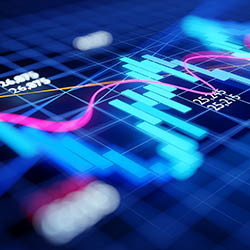
Cross-Cutting Data Analysis
Combining data from multiple sources allows for the investigation of underlying trends and helps to gain insights into the sustainment system. A broad picture view of the full system allows for the discovery of ground truth hidden by traditionally stovepiped processes. IDA has developed methods that use raw supply data in new ways to support the decision-making process. Our expertise in data visualization and providing a dashboard view of the data has helped our sponsors identify issues that they never realized were there.

Correlative Studies
We use advanced statistical methods to tie cause and effect together. These methods include machine learning, regression analysis, etc. Historical trends can reveal which factors likely drive performance in the sustainment picture.

End-to-End Model Development
IDA has worked with military and civilian sponsors to construct end-to-end simulation models using Opus Suite's Simulation and Predictive Analytics (SIMLOX) software for maritime and aviation weapon systems to investigate the strategic levers that drive readiness. Bottom-up emulations of real sustainment systems that explicitly model spares, personnel, operations and maintenance are a powerful way to tie funding decisions to their impact on readiness. These models enable predictions on how specific investments can cause changes to fleet readiness.

Data Access and Tool Development
IDA has experience in the development of sustainment data tools to process raw data into workable end products. Sustainment analysis requires extensive data to properly model the complex and variable processes involved in a sustainment system, which are often scattered across multiple organizations. Tool development builds consensus within the sustainment community and lowers the barrier for performing meaningful analysis. IDA is uniquely positioned to build these tools, conduct studies and share them with the DOW.

Decision Support
IDA staff leverages its deep understanding of sustainment processes and data to make cost estimates critical to the DOW. These estimates provide the DOW with insight into whether they should pursue decisions such as approving full-rate production of a weapon system or signing a performance-based logistics contract.
